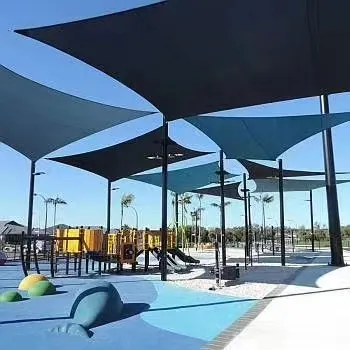-
 Afrikaans
Afrikaans -
 Albanian
Albanian -
 Amharic
Amharic -
 Arabic
Arabic -
 Armenian
Armenian -
 Azerbaijani
Azerbaijani -
 Basque
Basque -
 Belarusian
Belarusian -
 Bengali
Bengali -
 Bosnian
Bosnian -
 Bulgarian
Bulgarian -
 Catalan
Catalan -
 Cebuano
Cebuano -
 China
China -
 Corsican
Corsican -
 Croatian
Croatian -
 Czech
Czech -
 Danish
Danish -
 Dutch
Dutch -
 English
English -
 Esperanto
Esperanto -
 Estonian
Estonian -
 Finnish
Finnish -
 French
French -
 Frisian
Frisian -
 Galician
Galician -
 Georgian
Georgian -
 German
German -
 Greek
Greek -
 Gujarati
Gujarati -
 Haitian Creole
Haitian Creole -
 hausa
hausa -
 hawaiian
hawaiian -
 Hebrew
Hebrew -
 Hindi
Hindi -
 Miao
Miao -
 Hungarian
Hungarian -
 Icelandic
Icelandic -
 igbo
igbo -
 Indonesian
Indonesian -
 irish
irish -
 Italian
Italian -
 Japanese
Japanese -
 Javanese
Javanese -
 Kannada
Kannada -
 kazakh
kazakh -
 Khmer
Khmer -
 Rwandese
Rwandese -
 Korean
Korean -
 Kurdish
Kurdish -
 Kyrgyz
Kyrgyz -
 Lao
Lao -
 Latin
Latin -
 Latvian
Latvian -
 Lithuanian
Lithuanian -
 Luxembourgish
Luxembourgish -
 Macedonian
Macedonian -
 Malgashi
Malgashi -
 Malay
Malay -
 Malayalam
Malayalam -
 Maltese
Maltese -
 Maori
Maori -
 Marathi
Marathi -
 Mongolian
Mongolian -
 Myanmar
Myanmar -
 Nepali
Nepali -
 Norwegian
Norwegian -
 Norwegian
Norwegian -
 Occitan
Occitan -
 Pashto
Pashto -
 Persian
Persian -
 Polish
Polish -
 Portuguese
Portuguese -
 Punjabi
Punjabi -
 Romanian
Romanian -
 Russian
Russian -
 Samoan
Samoan -
 Scottish Gaelic
Scottish Gaelic -
 Serbian
Serbian -
 Sesotho
Sesotho -
 Shona
Shona -
 Sindhi
Sindhi -
 Sinhala
Sinhala -
 Slovak
Slovak -
 Slovenian
Slovenian -
 Somali
Somali -
 Spanish
Spanish -
 Sundanese
Sundanese -
 Swahili
Swahili -
 Swedish
Swedish -
 Tagalog
Tagalog -
 Tajik
Tajik -
 Tamil
Tamil -
 Tatar
Tatar -
 Telugu
Telugu -
 Thai
Thai -
 Turkish
Turkish -
 Turkmen
Turkmen -
 Ukrainian
Ukrainian -
 Urdu
Urdu -
 Uighur
Uighur -
 Uzbek
Uzbek -
 Vietnamese
Vietnamese -
 Welsh
Welsh -
 Bantu
Bantu -
 Yiddish
Yiddish -
 Yoruba
Yoruba -
 Zulu
Zulu
bird control netting
Bird Control Netting An Essential Tool for Protecting Crops and Property
In agricultural practices and urban developments alike, the issue of bird control has become increasingly prominent. Birds can often be seen as a nuisance, particularly when they invade crops, commercial properties, or residential areas. Their propensity for scavenging and nesting can lead to significant economic losses, contamination of produce, and damages to property. To combat these challenges, many farmers and property owners have turned to bird control netting as a viable solution.
Bird control netting is a physical barrier designed to prevent birds from accessing specific areas. Made from durable materials like polyethylene, these nets are lightweight, yet strong enough to withstand environmental factors such as wind and rain. Available in various mesh sizes, bird control netting can effectively deter a range of bird species, from small finches to larger gulls, while allowing beneficial wildlife to pass unhindered.
One of the primary benefits of using bird control netting in agriculture is its ability to protect crops without the need for harmful chemicals or pesticides
. By covering fruit trees, berry bushes, and vegetable patches, farmers can safeguard their produce from bird damage. This not only helps to preserve the quality and quantity of the harvest but also supports organic farming practices by minimizing reliance on synthetic solutions. As consumers increasingly lean towards organic products, using non-toxic methods of pest control is becoming a significant selling point for many agricultural businesses.bird control netting

In urban settings, bird control netting serves to protect buildings and structures from the impacts of birds. For example, pigeons and seagulls can create unsightly messes with their droppings, which can damage surfaces and lead to costly repairs. Installing bird control netting on rooftops, balconies, and ledges can effectively deter these birds from roosting and nesting, thereby preserving the integrity of properties. Moreover, this approach aids in maintaining cleanliness within the urban environment, promoting a more pleasant experience for residents and visitors alike.
Another advantage of bird control netting is its versatility. It can be easily custom-fitted to various locations, making it suitable for diverse applications. Whether it’s a small backyard garden or a large agricultural field, there is a netting solution available to meet the specific needs of the space. Additionally, many bird control netting products are designed for easy installation and removal, allowing users to adapt to different seasons and situations as needed.
However, it is essential to consider the humane aspects of bird control. While netting effectively deters birds, it is crucial to ensure that it is installed correctly to minimize the risk of entanglement or harm. Choosing high-quality netting that complies with animal protection guidelines is paramount to ensure a responsible approach to pest management.
In conclusion, bird control netting has emerged as an effective, eco-friendly solution for managing bird populations in both agricultural and urban environments. Its protective qualities not only safeguard crops and property but also support sustainable practices in a world increasingly focused on environmental conservation. By prioritizing humane and effective methods of bird control, we can coexist with wildlife while minimizing the potential challenges they present. As technology and materials continue to evolve, the future of bird control netting looks promising, offering innovative solutions to age-old problems.
-
Shipping Plastic Bags for Every NeedNewsJul.24,2025
-
Safety Netting: Your Shield in ConstructionNewsJul.24,2025
-
Plastic Mesh Netting for Everyday UseNewsJul.24,2025
-
Nylon Netting for Every UseNewsJul.24,2025
-
Mesh Breeder Box for Fish TanksNewsJul.24,2025
-
Expanded Steel Mesh Offers Durable VersatilityNewsJul.24,2025











